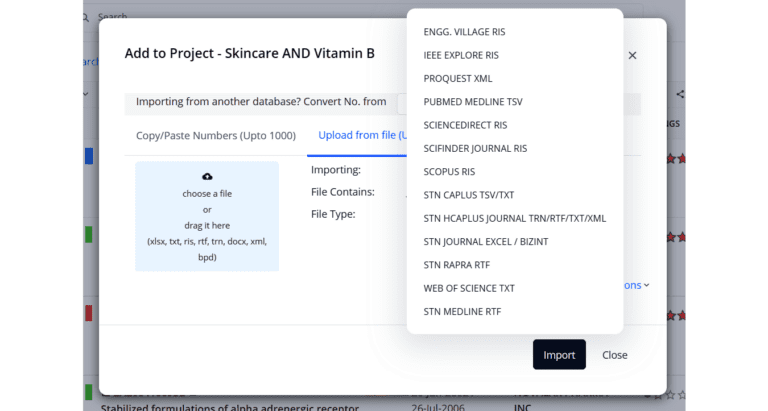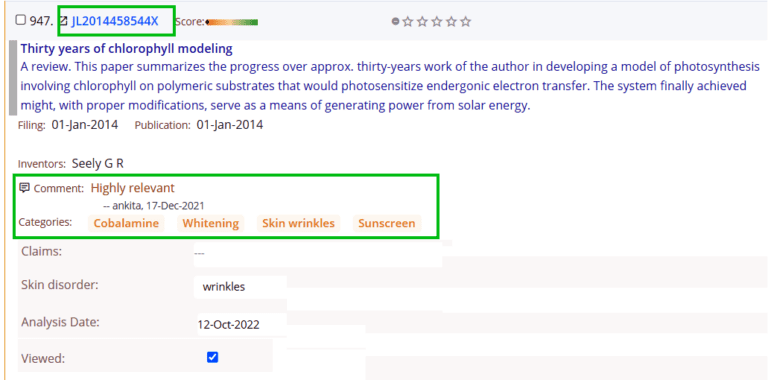Share
Share

What is Non-Patent Literature and Why is It Important in Patent Research?
Scholarly publications have always been the go-to information source for pioneering research in academia. In the context of IP, these publications (scientific journals or conference publications) are commonly referred to as non-patent literature or NPL. NPL has many applications in IP ranging from being an important source of prior art for novelty or invalidity searches to competitive intelligence. Any NPL that is closely related to the subject matter covered in a patent application is cited within the document by the inventor or examiner. These citations serve a vital role in future evaluations of the patent. Many competitive intelligence workflows also rely on NPL citations to derive various insights on the depth of the patenting entity’s research.
Types of NPL and their sources
NPL can be broadly classified into journal references and non-journal references.
| Journal references | Scientific publications in journals | Sources: IEEE, Research Gate, Springer, Wiley Online Library, PubMed, Web of Science, Science Direct, Agris, AGRICOLA, DOAJ, MDPI, Springer, Google Scholar, etc. |
| Non-journal references | Conference proceedings, reference books, company newsletters, blogs, announcements, social media, YouTube, books, magazines, patent related documents | Sources: Derwent Innovation Index, Google Patents, Google Scholar, lens.org, IEEE, Science Direct, Wiley, social media platforms, company websites, etc. |
Where does NPL fit into IP processes?
A) Novelty search or invalidation search
Apart from patents, NPL counts as valid prior art for novelty or invalidity searches. Since NPL is published before patents (which take anywhere from 12-24 months from the filing date to publication), it should be included in your prior art searches especially in projects where the future investments are high and therefore the risk of spending time and money on inventions that might not get patent protection needs to be mitigated beforehand.

B) Competitive intelligence & technology analysis
NPL holds a lot of potential for competitive intelligence activities. Prominent CI activities include:
- Finding open innovation or licensing partners – Literature research can help in finding the right partner for open innovation or licensing. If a company has already started work on a technology, they can use literature references to find partners that are working in the same industry to accelerate the development of the technology and launch it in the market before others do so.
- Accelerating the innovation cycle – A thorough study of NPL along with patents helps accelerate the innovation cycle from ideation to commercialization. As universities initially publish only a fraction of their research in patents, no technology landscape or problem-solution analysis is complete without looking at non-patent literature.
- Exploring research direction and investment prospecting – Extracting hidden technologies from patent and NPL datasets and making it easy to analyse them can help uncover hidden opportunities and complementary application areas for your research. If your idea is not exactly novel, you can combine it with someone else’s work to make it novel.
How can PatSeer help you leverage NPL as part of your IP processes?
PatSeer provides all the tools for extracting topics and keywords from patents and NPL and conducting various slice-dice/trend analyses on them. You can export relevant NPL data from your journal website of interest and import it in a PatSeer project to simultaneously analyse patents and NPL. For e.g.: if you are exporting articles from IEEE, you can export the articles in a RIS file and then import them into a PatSeer project.

The articles will get added to the project and you can analyse them just like patents. For example, you have the option of applying categories, adding comments, custom fields, ratings and flags to the NPL articles. You can further run clustering and semantic analysis over them and use the generated topics for statistical correlation or trend analysis. Combining patents and NPL in your technology landscapes increases chances of discovering hidden and deeper insights for the technology.

Summary
NPL will always remain an important repository for research data that cannot be ignored in IP workflows for search or analysis. PatSeer goes beyond a patent research software and serves as a one-stop solution for all associated NPL tasks that are part of your IP processes.
